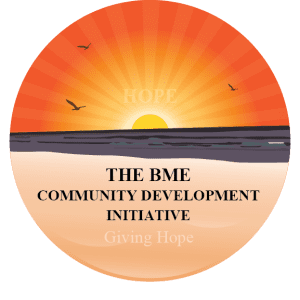Approaches and Models of Gang Violence Prevention Programs

Gang violence prevention requires a comprehensive approach, as gangs are complex social groups that fulfil various needs for youth: protection, belonging, income, etc. Over the years, experts have developed several models of gang violence prevention programs, each targeting different stages of gang involvement. Understanding these approaches can help funders and communities choose the right mix of interventions.
One widely cited framework divides strategies into Primary, Secondary, and Tertiary prevention:
Primary prevention targets all youth in a community, aiming to stop gang involvement before it starts. This includes school-based programs like Gang Resistance Education and Training (G.R.E.A.T.), which teach students about the realities of gang life and build skills like resisting peer pressure.
Community-wide initiatives, such as public awareness campaigns and youth development programs: sports, arts, leadership clubs, also fall here. The logic is simple: keep kids engaged in positive activities and informed about risks, and most will never consider joining a gang.
Secondary prevention zeroes in on at-risk youth who exhibit signs of drifting toward gangs. For example, truancy, minor delinquency, association with known gang members. Programs for this group involve intensive mentoring, family intervention, and outreach. One effective model is the “Youth Service Bureau” concept, where social workers or outreach workers identify at-risk teens and provide case management connecting them to counselling, after-school jobs, and constructive hobbies.
Another key piece is involving family. Parenting training or even relocating a youth to a safer environment can be secondary prevention measures. Evidence shows that well-timed secondary interventions can steer a teen away from gangs at the pivotal moment before initiation. For instance, a focused project in Los Angeles provided at-risk youth with mentors and homework help, resulting in reduced gang joining rates in the target community.
Tertiary prevention (Gang intervention) is essentially “exit strategy” work for active gang members or those already involved in crime. These programs, which overlap with intervention, aim to pull youths out of gangs and reintegrate them into society. This could involve job training, tattoo removal, substance abuse treatment, and even relocation to protect them from gang retaliation.
Programs like “Homeboy Industries” in California run by reformed gang members and offering employment in social enterprises are a classic example of tertiary prevention. The goal is to offer gang-involved youth an off-ramp credible opportunities to build a life away from the gang. Studies on such programs have reported lower recidivism among participants and higher employment, demonstrating their value.
In practice, successful gang violence prevention strategies blend these levels. For instance, the comprehensive “public health model” adopted in cities like Glasgow and Chicago combines community-wide measures primary, targeted outreach, secondary, and rehabilitation of gang members tertiary. The UK’s Centre for Social Justice estimated that up to 70,000 young people across the UK might be involved in gangs or on the periphery, which underscores the need for interventions at all points of the spectrum.
It is also important to align programs with local context. Urban street gangs differ from rural gangs or organised crime networks. Thus, programs must be tailored. In London, for example, gang violence prevention programs have focused on “postcode rivalries” working with schools in rival neighbourhoods to do joint workshops and break down territorial hostilities. In contrast, U.S. cities have tried “Ceasefire” focused deterrence law enforcement plus community message to directly prevent retaliatory shootings among gangs, which is more of an intervention model but with preventive impact.
For funders and practitioners, understanding these models helps in designing a cohesive strategy. An ideal gang violence prevention initiative in a city might fund school curriculum (primary), outreach workers and family services (secondary), and a re-entry program for youth coming out of juvenile detention (tertiary). Coordination among these efforts is crucial hence many places now have multi-agency gang prevention task forces that ensure information-sharing between schools, police, and community agencies
Gang violence prevention programs range from broad-based youth development to highly focused interventions for entrenched gang members. Each approach addresses the problem from a different angle, and the best results come when these are deployed in concert. By investing in a spectrum of programs, communities can both “turn off the tap” stopping new recruits and “drain the pool” helping current gang youth find a way out.



